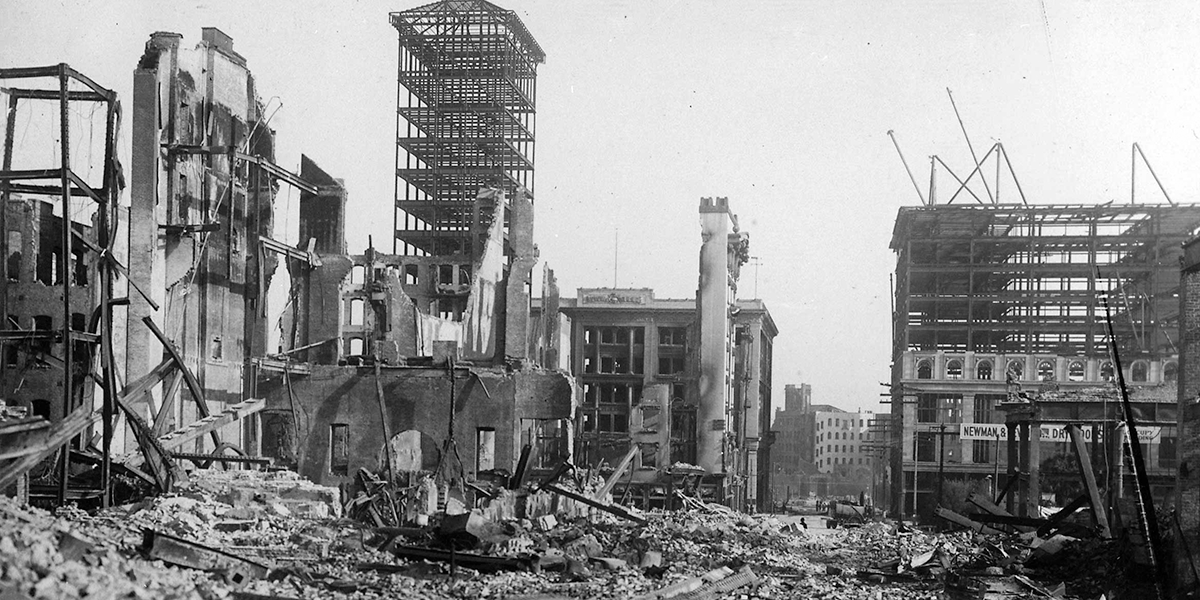
HISTORY -- When the Great Earthquake hit on April 18, 1906, San Francisco was already a thriving business center.“The most powerful corporations in the West all had their headquarters in San Francisco,” says Robert W. Cherny, a History professor emeritus at San Francisco State University and co-author of San Francisco, 1865 – 1932. “San Francisco was really the economic and cultural center of much of the Western United States.”
The fire came just a year after the city had commissioned an architect to design a new municipal plan. That architect, Daniel Burnham, came up with a design to reorganize the city’s streets to make them more scenic, Cherny says. But after the earthquake, San Francisco feared that the plan would take too long to implement alongside its necessary recovery efforts. After all, Los Angeles was growing rapidly, threatening to overtake San Francisco in importance.
“In the end, the demand to rebuild quickly took precedence over the demand for, essentially, beautification,” he says. “And so in their haste to rebuild, they simply scrapped that plan and instead pretty much rebuilt all the streets where the streets had been before, and rebuilt much of the downtown in the same place it had been before.”
Photo: H.D. Chadwick/U.S. Government War Department, Office of the Chief Signal Officer